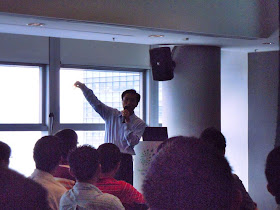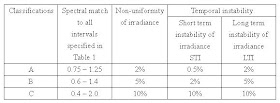Today, a seminar entitled “LED Testing Standards and its underlying opportunities in Hong Kong” was held in Hong Kong Science Park. It is a event under Exchange@Science Park which is an informal networking and aims to provide a platform for the technology community to come together for idea exchange. The summary of the seminar was shown below.
The first speaker was Mr. Samson Leong (Manager – Luminaires Energy Efficency) and his topic entitled “LED Testing Standards and its business opportunities in Hong Kong”.

He briefed the some lighting tests in Hong Kong included performance test, photo-biological safety, Safety (NA & EU), EMC, FCC, etc.
For performance test, Energy Star for Solid State Light (SSL) Luminaries in North America was introduced and the scopes were:
i. SSL products used for general illumination
ii. Residential and commercial products
iii. Products connected to the electric power grid
There were many test items included Lamp Efficacy (Lumens/watt), Lumen maintenance of LED Light Sources; Color Correlated Temperature (CCT), Minimum Color Rendering Index (CRI), Color Spatial Uniformity, Color maintenance, Zonal density requirement, Off-state Power, Thermal Management, Power Factor, Transient Protection, Operating Frequency, Electromagnetic Interference, etc.
One of important concern was “Photo-biological Safety”. The slide stated white light LEDs were widely used in most of LED products which has the unique “Blue Light” hazard. The test standard was referred to EN 62471.

It was classified into three risk group as follows.
Exempt: No photobiological hazard
Group 1 (Low-Risk): No photobiological hazard under normal behavioral limitations
Group 2 (Moderate-Risk): Does not pose a hazard due to aversion response to bright light or thermal discomfort
Group 3 (High-Risk): Hazardous even for momentary exposure
The following table showed exposure time before hazard exceeded.

Then electrical safety of LED part under different standards was briefed.
IEC/EN standards:
IEC/EN 60598 series: Luminaries, LED fixture
IEC/EN 60968 : Integrated LED Bulb
IEC/EN 61347-2-13: Electronic controlgear for LED modules
IEC/EN 62031: LED modules for general lighting
National standards:
UL 8750: Light Emitting Diode (LED) Equipment for Use in Lighting Products
UL 1598: Fixed Luminaire
UL 1573: Stage and Studio Luminaire
UL 1993: Self-ballast lamp
UL 1786: Direct Plug-in Nightlight
UL 1838: Low Voltage Landscape Lighting
Mr. Samson Leong summarized market voice such as OSRAM, Philips, Toshiba, GE and Starbucks. He predicted LED industry growth would be significant in near future. The biggest market in the world would be in China (十城萬盞計劃 in 2009). The LED plan in China (十城萬盞計劃) is to select 21 cities to install over 10000 LED street lamps for public usage in each cities. It was expected upto 2 millions LED street lamps for public usage in China in 2010.
Lastly Samson concluded the foreseeable problem within LED industries into two points:
1. Once the standard of US and Europe are well established, all others countries will also follow. (e.g. ELI)
2. The painful filtering process within LED manufacturers will greatly impact the development of LED market.
The second speaker was Mr. Thomas K.W. Chaung (Senior Director – Sales & Marketing, Light Engine Limited) and his topic named “What is the Quality LED Lighting Products from Manufacturer’s Prospective?”

He mentioned the benefits to consumers and respond to climate change when applied LED lighting. It is because of Energy efficient, Reduce maintenance cost and Lower carbon emission.
Then he briefed the 3 major aspects in designing and building a quality LED lighting product. They were:
- Integration of various design aspects
- Verification on performance and safety
- Quality control in manufacturing
Then R&D Integration was shared that it included Optical design, Mechanical design, Electrical design and Thermal design. All designs had computerized simulation. There were more than 50 R&D experienced engineers located in HK, Japan, Taiwan and China office. (About 30 R&D engineers in Hong Kong Science Park)
After the product designed, the verification to evaluate the product should be followed the international standards:
1. Product Safety involved electrical, EMC and photo-biological (UL-8750/1993/1598; IEC-61000/61347/62471/60598/60968)
2. Performance involved electrical and photometric (IEC61347; LM79)
3. Reliability and life demonstration (LM80)
4. Operating environment (IEC68; GB-2423; JESD-22)
Then Mr. Chaung showed their company product and described several testing for performance verification such as Thermal Stabilized System, Reliability Test and Thermal Shock Testing, Vibration Testing, Salt Spray Testing, Accelerate Life Testing, Room Ambient Life Testing, Burn-in and end of Life Testing, etc.
























































